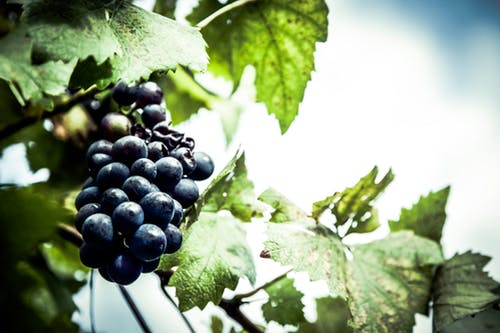Posted: Mar 27, 2019

Have you tried Amarone della Valpolicella? Find out where and how it is made...
What is Amarone wine?
Amarone della Valpolicella is a wine made with partially dried grapes in Valpolicella, Veneto, North-east Italy. There are three geographical sub zones; Classico, Valpantena and ‘Est’, the extended zone.
‘Each of the three geographical zones has its own identity,’ said Michael Garner, in the 2018 Decanter Italy supplement.
‘In broad strokes: Amarone from Classico tends to be the most elegant and aromatic, versions from the Valpantena are generally lighter and fruitier, while the so-called ‘extended’ zone (beyond Classico and Valpantena, bordering on the Soave) tends to produce richer, more muscular wines with a higher alcohol level.’
Amarone: The Facts
Amarone Riserva Grapes Amarone is produced throughout the Valpolicella denomination (including the sub-zones of Classico and Valpantena) from grapes dried until at least 1 December following the vintage and fermented out to a minimum of 14% alcohol. The wine may contain a maximum of between 12g/L and about 16g/L of sugar (depending on its total alcohol content), though 5-7g/L is more common. The wine is aged for a minimum of two years from the year following the vintage or for four years (beginning in November) for Riserva.
Grape varieties
There are a few permitted grape varieties in Amarone wine – the main ones being Corvina, Corvinone and Rondinella, plus some lesser known ones.
‘The aromas and flavours of Amarone are determined invariably by Corvina – and to a lesser extent Corvinone,’ said Garner.
‘Elegance and perfume (especially a telltale note of freshly ground black pepper) are hallmarks of the former, while Corvinone has deeper colour, more tannins and tobacco-like aromas.’
‘Some growers talk up the current favourite Oseleta despite the low ratio of solid-to-liquid (skins and pips to must), which makes the variety a less suitable candidate for appassimento.’
Oak ageing
‘Amarone spends a minimum of two years in wood, though can remain there for up to nine or 10 in rare cases (Quintarelli, Zyme). Barrels vary from French and Slavonian oak through to chestnut, cherry and even acacia,’ said Garner.
‘Newer, smaller barrels, usually oak, are commonly used and have a distinct effect on both aroma and texture (mouthfeel) in particular, though there seems to be a return to the more subtle and seasoned notes promoted by larger and older wood.’
History
Over the first decade of the new millennium, the number of bottles produced annually tripled and now averages above 18 million. Amarone’s traditional role as vino da meditazione (a post-prandial to be sipped while discussing the finer things in life) was called into question. High alcohol and sugar levels make the wine a tricky match with food and, given the massive upsurge in production, Amarone had to find a place at table to keep pace with the consumer’s changing lifestyle.
Many producers went back to the drawing board: the rediscovery of long-forgotten grape varieties; more ‘complete’ fermentations heading towards a drier style; experiments with different-sized barrels and wood types, etc – all aimed at reshaping the wine’s identity. Others dug their heels in and remained faithful to the time-honoured ways. Indeed some continued to accept the presence of a small proportion of the fungus in its ‘larval’ or nascent form, ie: before full sporulation. As such, Muffa nobile or noble rot can confer expansive and developed aromas of macerated fruits plus the honeyed notes typical of botrytised wines and, in addition, boosts glycerol levels, enhancing the wine’s velvety texture.
Three key styles
The upshot of this activity accounts for the surprisingly wide spectrum of aromas and flavours typical of today’s Amarone. Three styles dominate current production.
A simpler version usually with less wood ageing showcases its friendlier side. Many believe that Amarone is best drunk by its 10th birthday when the wine is still all about roundness, softness and harmony.
Smaller batches of a grower’s very finest fruit are fermented separately and often given extra wood ageing; this ‘premium’ or Riserva version is capable of lasting for up to 20 years or so in bottle.
Finally, the more ‘modernist’ interpretation of Amarone embraces a more concentrated, longer-lived and less oxidative style of wine through the use of controlled appassimento and mainly smaller (225L or 500L) new oak barrels.
Appassimento
Appassimento is the method of partially drying out the grapes, which are then slowly pressed, and slowly fermented, to make Amarone della Valpolicella.
‘Amarone is about winemaking as much as anything else,’ said Susan Hulme MW, in our 2017 panel tasting.
‘Decisions around drying the grapes, length of appassimento, and time fermenting on skins make dramatic differences to style and quality.’
By Ellie Douglas
March 27, 2019
Source: Decanter.com
Go-Wine's mission is to organize food and beverage information and make it universally accessible and beneficial. These are the benefits of sharing your article in Go-Wine.com


The Wine Thief Bistro & Specialty Wines is a locally owned small business in downtown Frankfort, IL offering world class wines in a relaxed, casual gathering spot for friends and family. Offering world class virtual tastings and touchless carryout.
https://www.twtwineclub.com/aboutus
Go-Wine 25 Great Wineries in US selection prioritizes quality, value and availability.
www.go-wine.com/great-wineries-in-america
Tasting wine is a nice experience, but visiting the places in which wine is made is a magic moment. Available in New York City for touchless pickup.